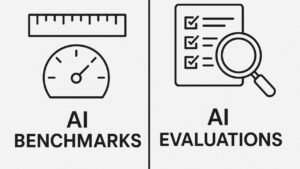
From AI Pilot Purgatory to Production-Ready: Why Most AI Projects Stall—and How to Beat the Odds
Let’s be honest—AI in 2025 is facing a harsh reality. Despite all the buzz, nearly half of AI proof-of-concepts never make it to production. According to S&P Global Market Intelligence, the percentage of enterprises abandoning the majority of their AI projects jumped from 17% in 2024 to 42% in 2025. AI project failure rates are on the rise: report | Cybersecurity Dive
If you’ve followed my posts on AI evaluation, you know we’ve covered the essentials: the difference between benchmarks and real evaluation, how to spot when your AI is hallucinating, and why trust in agents matters more than ever. But there’s a deeper issue we need to tackle now—the chasm between a successful pilot and a scalable production system.
And that’s the part tripping up even the best teams.
Scaling AI: Where the Wheels Come Off
Here’s what usually happens. The demo impresses everyone. The pilot runs like a dream on 100 clean, curated examples. But the moment you try to scale that system to 100,000 real-world predictions a day? Everything starts to fall apart.
Sound familiar?
That beautiful evaluation framework you designed? It buckles under scale. Manual reviews that were fine during testing become impossible to keep up with. Drift detection starts sounding like a broken fire alarm—blaring all the time with no actionable insight.
Let’s put some numbers on it: if it takes 5 minutes to evaluate each prediction, doing that across 100,000 predictions a day would need 347 full-time reviewers. Every. Single. Day. No company can sustain that.
So, we get stuck in what I call “pilot purgatory.” That place where your AI project technically works, but no one knows how to get it into the real world without it falling apart.
Why Most AI Projects Don’t Scale
The data’s damning:
- Only 18–36% of companies say they get the business value they expected from AI.
- Gartner forecasts that 30–50% of Gen‑AI projects will stall post‑pilot AI Failure Statistics – RheoData
This isn’t just a tech failure—it’s an evaluation failure. And more often than not, it’s because teams are still trying to scale pilots with tools and processes that were never built for production realities.
So how do you break out of this loop?
The Three Pillars of Scalable AI Evaluation
After reviewing hundreds of projects—some wildly successful, others abandoned in frustration—I’ve found three areas that consistently make or break scaling efforts.
1. Shift From Manual to Automated Evaluation
What works in a small test doesn’t work in production. At pilot stage, you can review every output manually, run detailed postmortems, and create neat little dashboards. That won’t fly at scale.
Here’s the shift that matters:
- Build automated quality metrics that approximate human judgment.
- Implement drift detection systems that tell the difference between real problems and noise.
- Use a tiered evaluation system, where automation handles the bulk of the work and humans step in only when things get weird or risky.
Think of it as evaluation triage—your system should know when to escalate, and when to stay quiet. That’s how you scale without losing your grip on quality.
2. Treat Monitoring as a Continuous Process
One of the biggest myths I see? That evaluation stops once the model goes live. In reality, production AI is constantly exposed to new data, users, and use cases.
And it can fail silently. Unlike traditional software, AI won’t crash. It’ll just quietly start getting things wrong. That’s why continuous monitoring isn’t optional—it’s your early warning system.
You need to monitor:
- Performance drift: Is the model less accurate than before?
- Data drift: Has the input data changed?
- Concept drift: Have the relationships the model learned started to shift?
- Behavioral drift: Are users doing unexpected things?
Organizations that nail this pillar have drift-aware infrastructure that catches problems before users (or regulators) do.
3. Build Organizational Readiness
This one gets overlooked all the time. You can have the best technical setup, but if your org isn’t ready to support it, you’re sunk.
Ask yourself:
- Do we have the technical infrastructure to evaluate at scale?
- Are our data processes and governance mature enough?
- Do we have the human capital to interpret monitoring alerts and act on them?
- And most importantly—is the culture ready for continuous iteration and improvement?
Final Thoughts: AI Evaluation Is the Scalability Engine
The biggest mistake teams make is treating evaluation as a side task. In reality, it’s the engine that drives scale. If your evaluation process can’t scale, your AI project won’t either.
The future of AI isn’t about bigger models—it’s about smarter evaluation. You need systems that can adapt, teams that can respond, and metrics that actually matter.
Because at the end of the day: you can’t manage what you don’t measure—and you can’t scale what you don’t systematically evaluate.
What about you? If you’re trying to scale AI in your organization, what’s getting in your way? I’d love to hear where the friction is—and how you’re approaching the leap from pilot to production. Email us at Lakshmi.sk@arkisol.com


